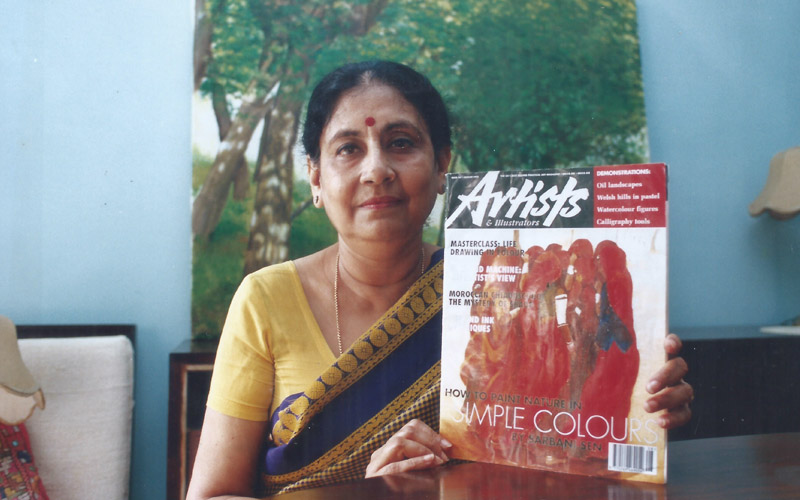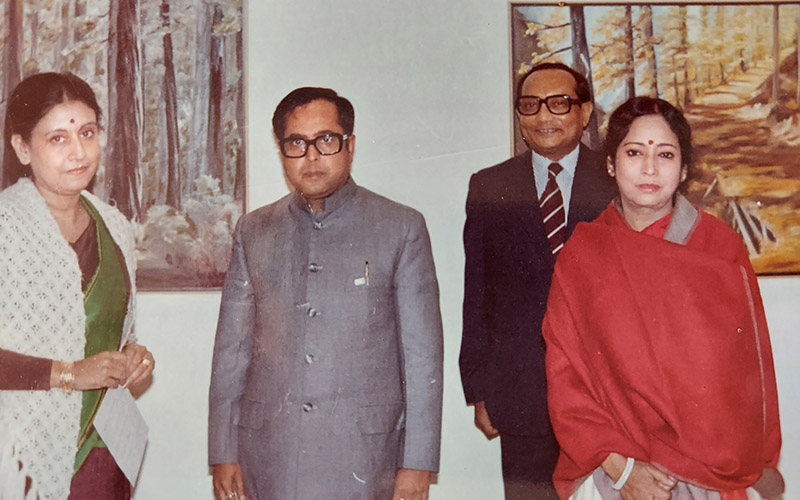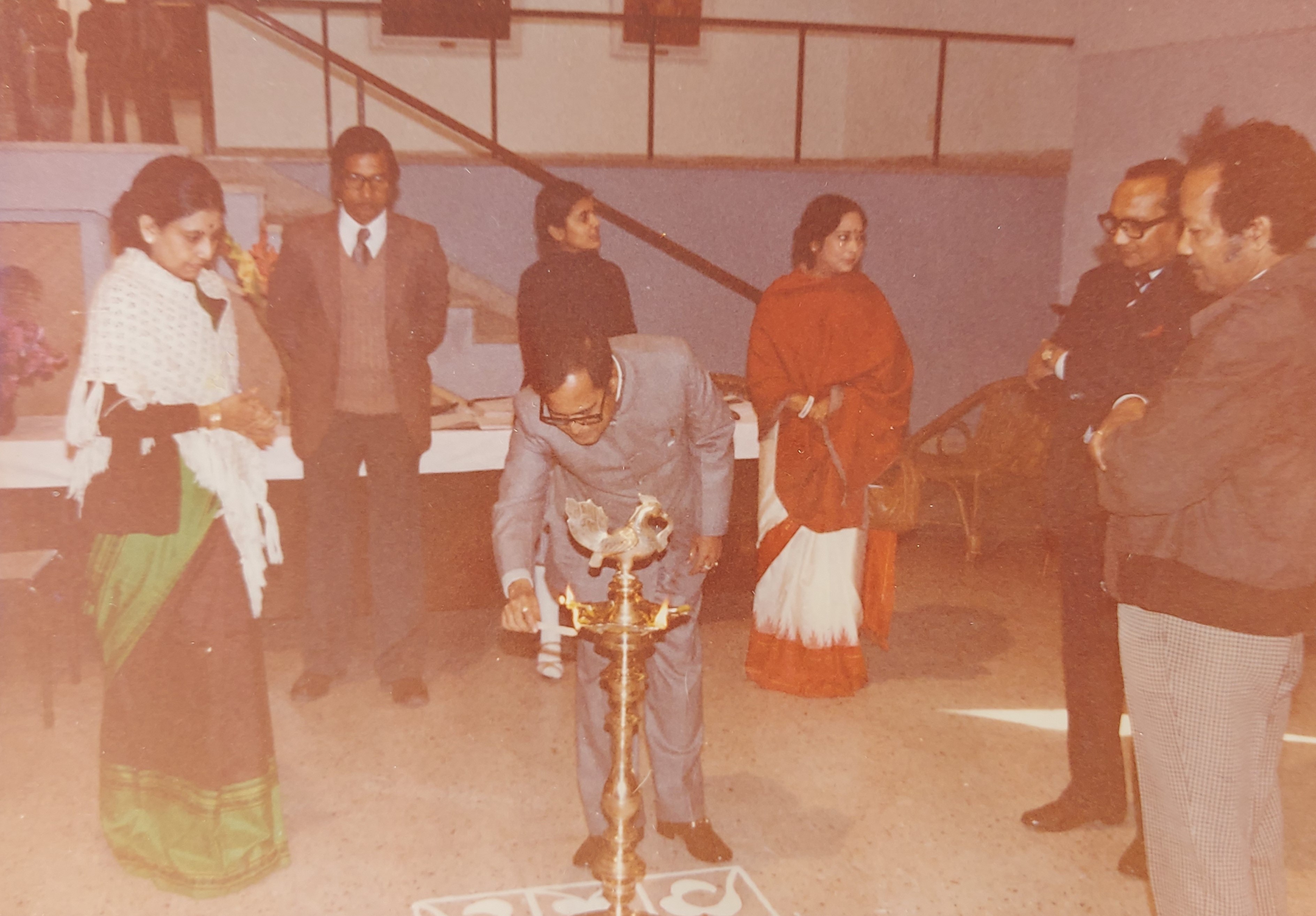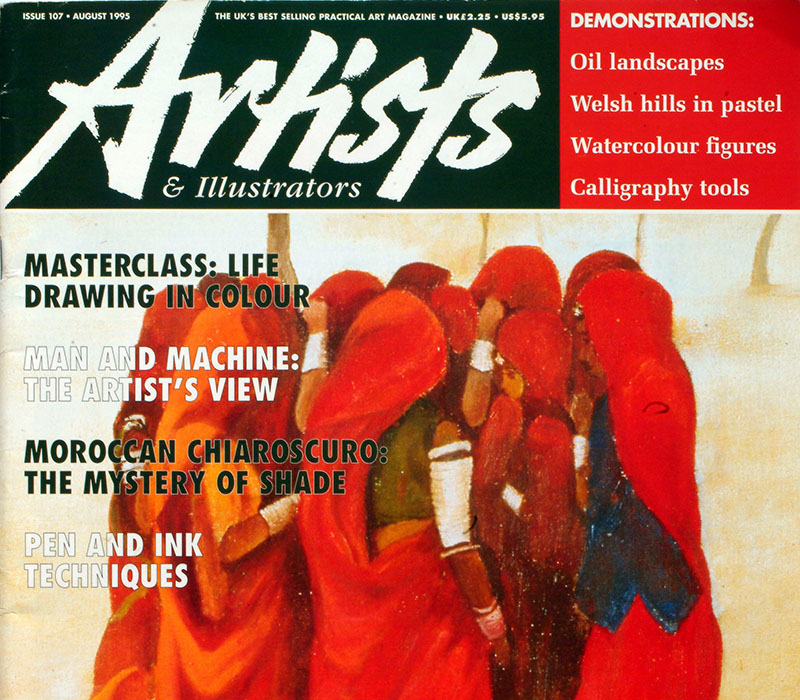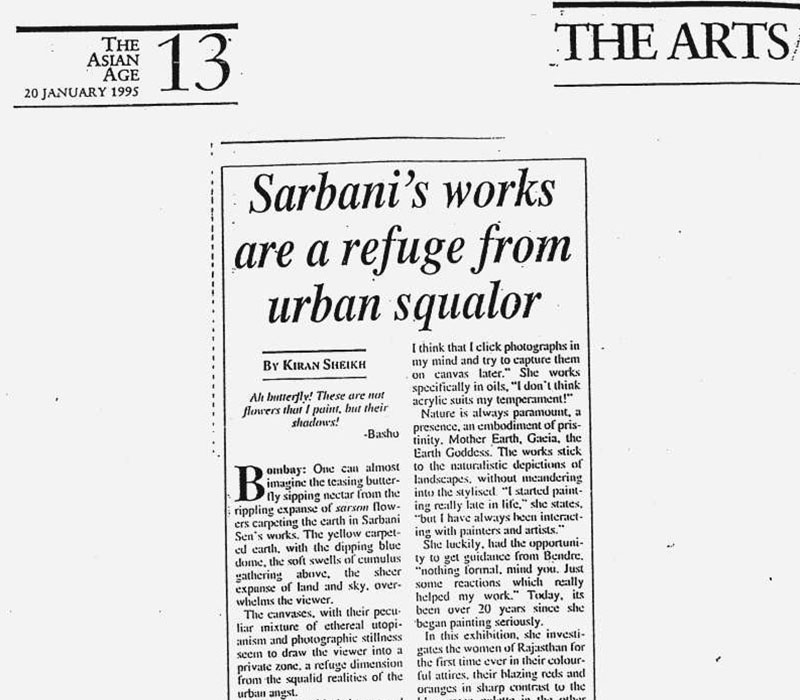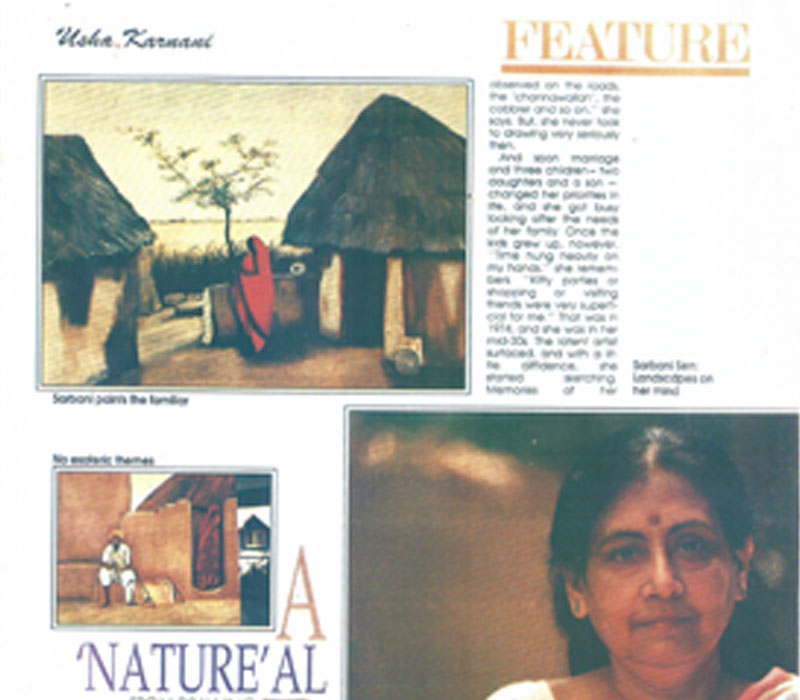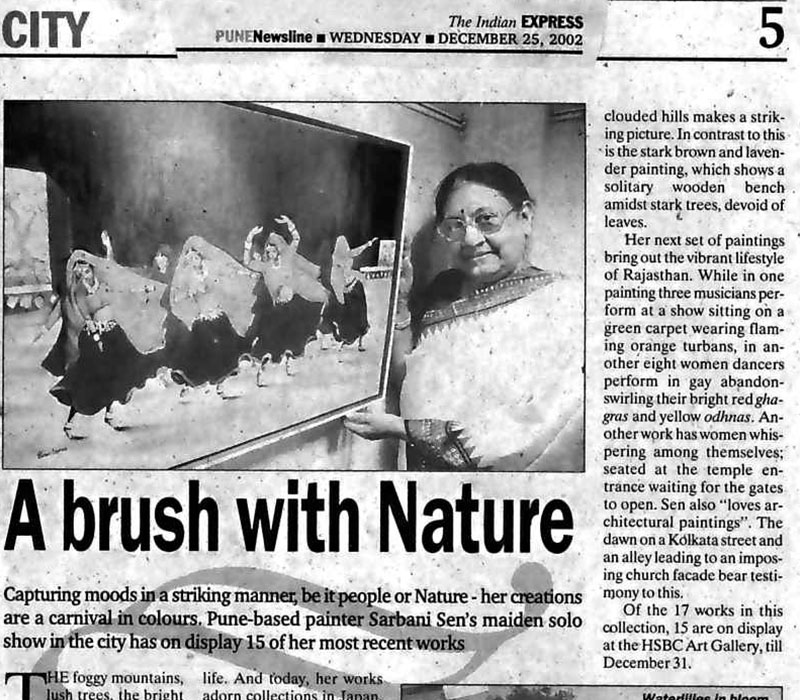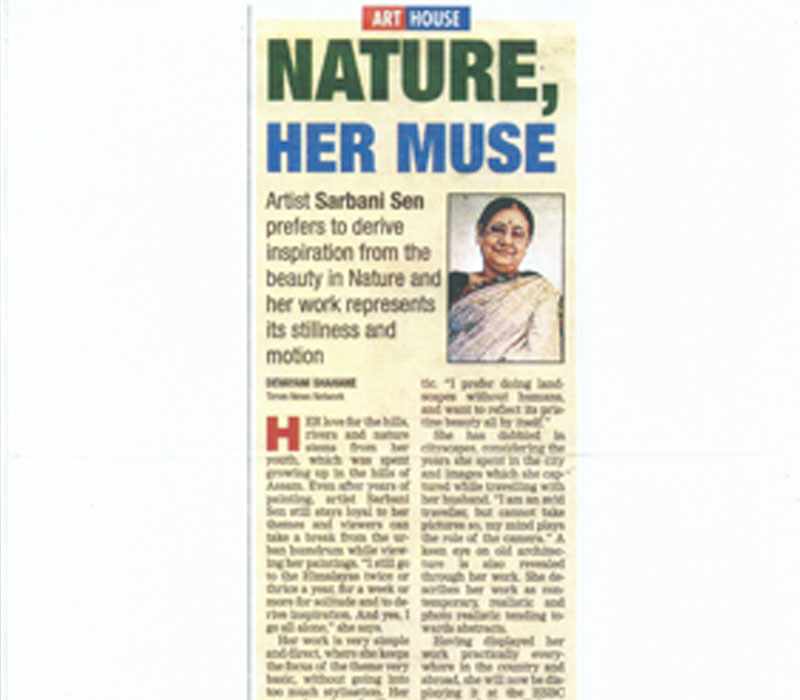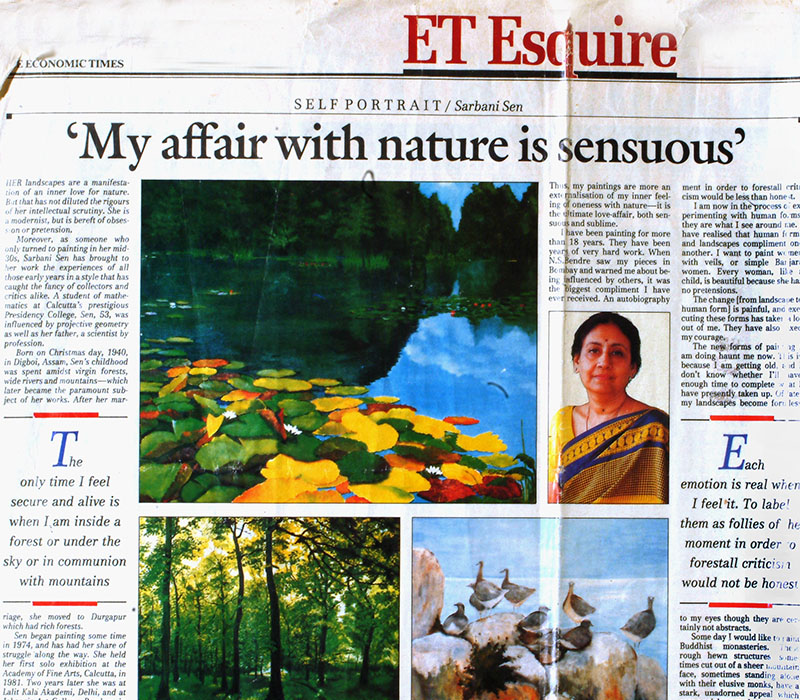Sarbani Sen
Brought up in Assam, Eastern India, surrounded by stunning landscapes from an early age, Sarbani was a proverbial lover of nature. Her work is about nature and man’s relationship with his environment. A compulsive traveler, a brilliant scholar, an ardent nature lover, that she has the stance of a romantic there is no doubt. She blends classic romanticism with mathematical precision to create a perfect balance of beauty and tranquility. Her work varies from the realistic to stylized semi abstraction.
Along with her curriculum in the Presidency University, Kolkata, she had read extensively on art and gained in-depth knowledge of classical and contemporary art in India, Europe and Japan. So, when she gave up a career in Mathematics and started sketching and painting whole heartedly, she was armed with an intensive knowledge of the theoretical side of painting and her mind was completely in tune with the sights and sounds around her.
From 1974 she started painting seriously, her subject remaining nature and man’s relationship with nature. In the early eighties, in Bombay, she came under the guidance of late Prof. N. S. Bendre of J.J. School of Arts, Mumbai, one of the great painters in India. From him she learnt the value of following her own instincts over being academic. She said of these years in an interview to the Economic Times, “… I have spent more time with canvases that I imagined I would be painting, than doing the actual painting. My mind has sped, leaving the brush to plod behind. Vision and imagery crowded my eyes but they eluded the hand…” While her vision is definitely that of a romantic, nothing diluted the rigors of intellectual scrutiny.
Sarbani started to show her paintings in exhibitions from 1981. She has had twenty five solo exhibitions of her paintings in galleries in Mumbai, Delhi, Calcutta and five in London.
Themes
Landscapes for her is a subjective reality, an atonement, where the beholder and the beholden become one. Nothing is allowed to intrude into this space, not even the artist’s own presence.
The desert paintings are a somewhat different story. The unyielding empty land, the relentless sun, the harsh wind, the figures as if seen through upward moving hot air, sometimes bordering on surrealism: here the story is of struggle and compromise of life, and living with and against nature.

